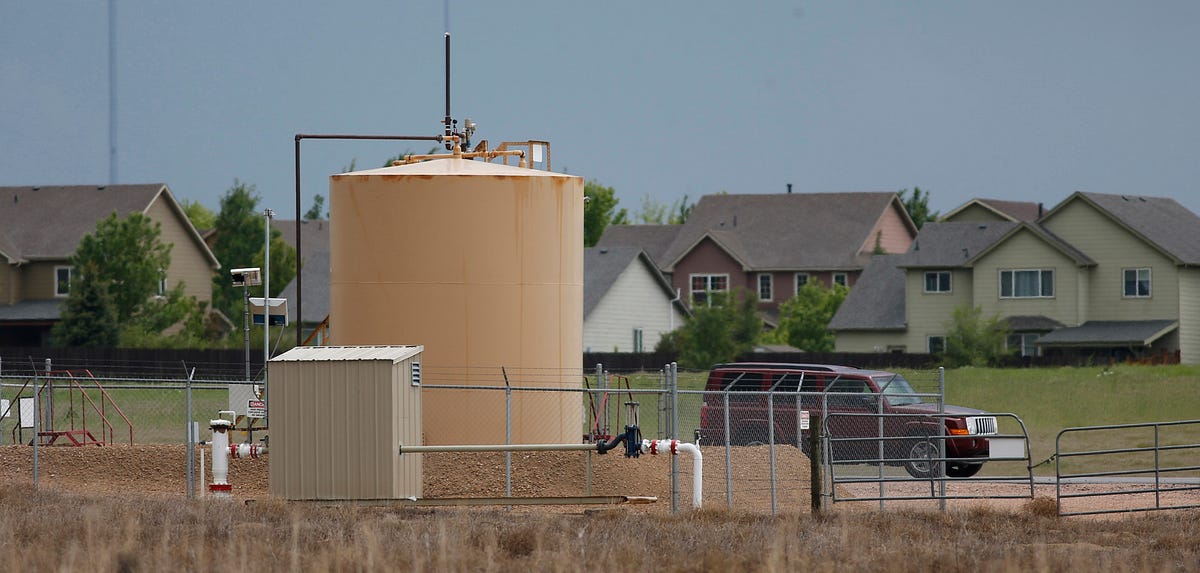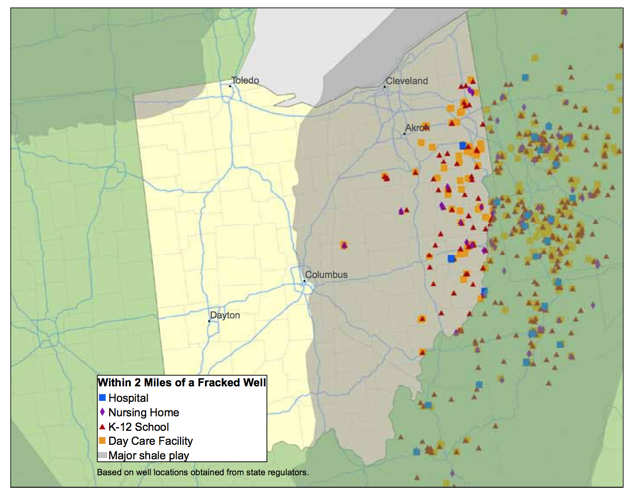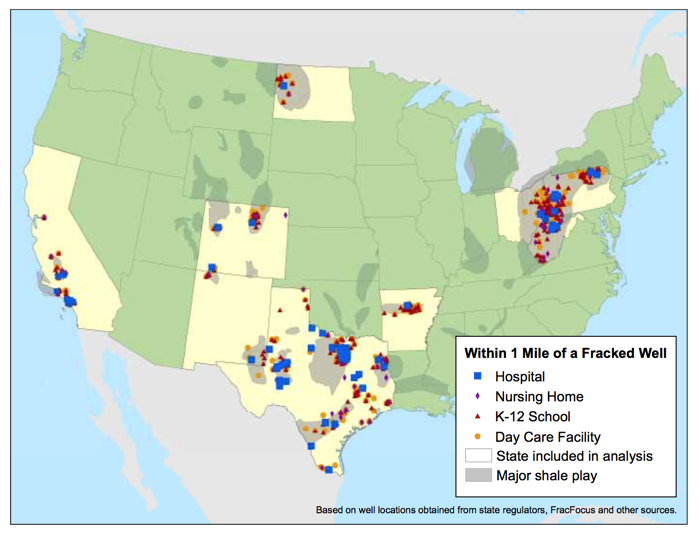
Fracking takes place too close to communities, activists and health reports say. CREDIT: AP Photo/David Zalubowski
New report shows that 650,000 children nationwide spend their days within a mile of an oil or gas fracking operation...
While the impact of fracking operations on the health of people living nearby was once uncertain, several studies in recent years have found that living near fracking sites — which are known to release carcinogenic compounds, as well as greenhouse gases — heightens the risk of asthma and other respiratory ailments.
Children are more sensitive than healthy adults to chemicals and particles in the air, but across the United States at least 650,000 students from kindergarten to high school spend their days within a mile of a fracking facility, according to a new report from Environment America.
CREDIT: “Dangerous and Close: Fracking Puts the Nation’s Most Vulnerable People at Risk.” Environment America, October 2016
The report looked at nine states with the highest prevalence of fracking. In addition to schools, it also considered day care centers and nursing homes, since the elderly are also more susceptible to poor air quality. The results of the report indicate a staggering impact on the country’s most vulnerable populations.
“This research is frightening to me, considering where I live and where my loved ones live,” Moms Clean Air Force advocate and Ohio resident Laura Burns said on a call with reporters Thursday.
Through the Marcellus corridor in eastern Ohio, western Pennsylvania, and West Virginia, the maps included in the report are thick with schools, day care facilities, and nursing homes within two miles of a fracking operation.
CREDIT: Environment America
In West Virginia, 8 percent of K-12 students spend their days less than a mile from fracking operations. Fully 10 percent of nursing homes are within one mile of a fracked well.
“Schools and daycare centers should be safe places for kids to play and learn,” Environment America’s Rachel Richardson said.
Fracking — an extraction process that uses high volumes of chemical-laced water to break up shale rocks formations deep underground, releasing the oil and gas deposits trapped inside — has been tied to a number of health and environmental risks. A recent study from Pennsylvania found a link between fracking and migraines, and a report last month found that children in the United States will experience 750,000 asthma attacks each summer by 2025 that will be directly attributable to the oil and gas industry.
“American society aspires to protect children, the sick and the elderly,” Elizabeth Ridlington, a policy analyst with Frontier Group and a co-author of the report, said in a statement. “We’ve sunk to putting vulnerable populations at risk instead of making the wholesale shift to conservation and renewable energy.”
There is a documented correlation, as well, between incidence of fracking near schools and the socioeconomic profile of a community: Less affluent, non-white communities are more likely to have fracking, and to have less controlled fracking, than wealthier, whiter communities.
Beyond its immediate impact on air quality, fracking and the natural gas it often produces has been tied to increased methane emissions. As methane traps heat 86 times more effectively over a 20-year period than carbon dioxide, the most prevalent greenhouse gas, it is a key contributor to global warming.

Samantha Page
Climate Reporter at @ThinkProgress.
Send your hot earth tips to [email protected]
source: https://thinkprogress.org/
original story HERE
To learn about more about global warming, climate change or greenhouse gases as well as the causes, consequences, solutions, definitions, facts and tipping points related to these subjects, click here.
To see our most current positions, opinions, comments, agreement or disagreement with this article, and/or possible criticisms related to the subjects or facts raised in the above article, click here. Then look for those subjects in the navigation links at the top the page.
To sign a critical petition for declaring an international global warming State of Emergency, click here!
To help do something about the climate change and global warming emergency, click here.
Sign up for our free Global Warming Blog by clicking here. (In your email, you will receive critical news, research, and the warning signs for the next global warming disaster.)
To share this blog post: Go to the Share button to the left below.





Be the first to comment
Sign in with